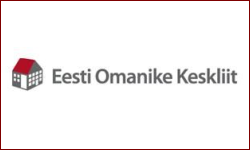 The events in the economy and politics over the last half-year have been unexpected. The UK referendum, the state of the US presidential election, the increase in popularity of extremist parties in Europe, and the diverging from democracy in some developing countries have clearly raised political risks. Regardless of this, the markets have been relatively calm towards such news, which can be seen as an adjustment to the new, more unstable situation. Ironically, market participants interpret the negative events as signs that the efforts of central banks and governments in bringing about economic recovery will become increase further. However, interest rates have reached new record-low levels that will clearly restrain further quantitative easing.
The events in the economy and politics over the last half-year have been unexpected. The UK referendum, the state of the US presidential election, the increase in popularity of extremist parties in Europe, and the diverging from democracy in some developing countries have clearly raised political risks. Regardless of this, the markets have been relatively calm towards such news, which can be seen as an adjustment to the new, more unstable situation. Ironically, market participants interpret the negative events as signs that the efforts of central banks and governments in bringing about economic recovery will become increase further. However, interest rates have reached new record-low levels that will clearly restrain further quantitative easing.
The European economy will continue on its earlier moderate growth path. Even though the situation in exports is not too good, internal consumption will increase due to the improved labour market figures. Development is still slow: according to SEB’s estimates, the unemployment rate in the euro zone will drop from the current 10 per cent to 9 per cent by 2018, and average economic growth will be limited to 1.7 per cent. Economic growth in export countries of significant importance to Estonia will remain good or will at least be better than before. The need to increase government expenditures in order to cope with the migration wave will lead to an increase of 3.7 per cent in the Swedish economy this year; GDP growth of more than 2 per cent can be expected throughout the entire forecast period. Even though economic growth in Finland will only reach 1.2 per cent by 2018, the period of decline will be a thing of the past and increasing imports will expand the opportunities of Estonian companies. The large German market will continue its stable growth and although political opposition leads to a slowing in the exchange of goods, the worst seems to be over in the Russian economy as well.
The situation with the Estonian economy is controversial. The growth of gross domestic product over the past two years has been slow and does not match our hopes of catching up with our wealthier northern neighbours as quickly as possible. A great deal of attention has been paid to the fact that, in terms of real value, the added value created in the economy is only now reaching the level where it was in 2007. All forecasts by economic analysts predicting an increase in growth in the near future have not borne fruit, and in the second half of the year expectations have once again been adjusted downwards – this time as well.
However, when assessing the economy from the perspective of an ordinary worker, there is no need to complain. The Estonian labour market has recovered much better from the last crisis than that of many other European countries. The employment rate and people’s desire to participate in the labour market are reaching historically high levels. The unemployment rate has dropped down to 6.5 per cent, which is a very low level for Estonia and significantly better than in the other Baltic States. Incomes are increasing at a rapid pace. Average wages increased last year by 6 per cent, and by as much as 8 per cent in the first half-year of 2016. The low fuel and food prices have left people with more money, which has been of help in improving living standards, especially among poorer households.
Fast growth in wages in the conditions of low economic growth leads us to the source at the expense of which the income of employees has increased – corporate profits. At first glance, one could be glad that companies are ready to pay most of their income out as wages. Unfortunately, the rise in wages has been funded at the expense of investments not being made, which means that in the long-run, the ability of a company to keep up with its competitors will decline. This is particularly important in Estonia where exports account for approximately 80 per cent of the gross domestic product. Fortunately, some progress has been noted in foreign trade in the past few months.
According to the forecast, economic growth in Estonia in the second quarter of the year will speed up, as a result of which Estonia’s GDP will increase by 1.7 per cent this year. The reasons for this are the improvement in export demand and the increase in capital expenditures. Supported by stronger export markets and active private consumption, economic growth will speed up to 2.4 per cent in 2017 and to 3 per cent in 2018. Public sector investments are also on the rise, supported by European Union structural funds and inspired by another election cycle.
Further info on
Mihkel Nestor
Economic Analyst














